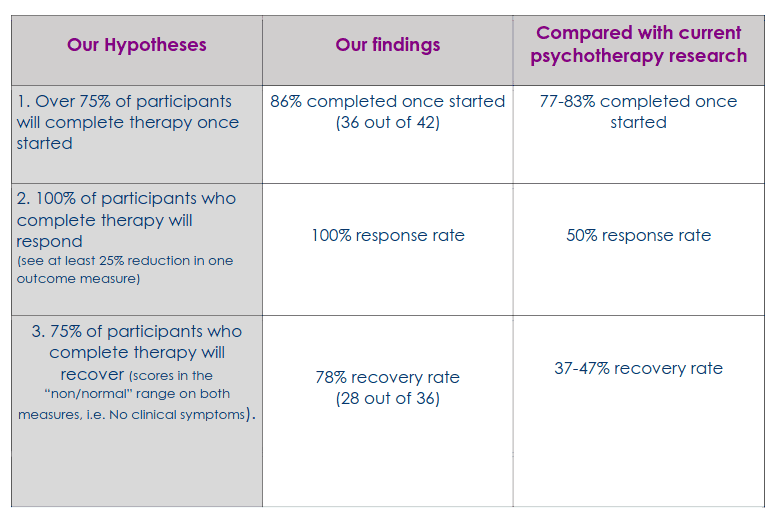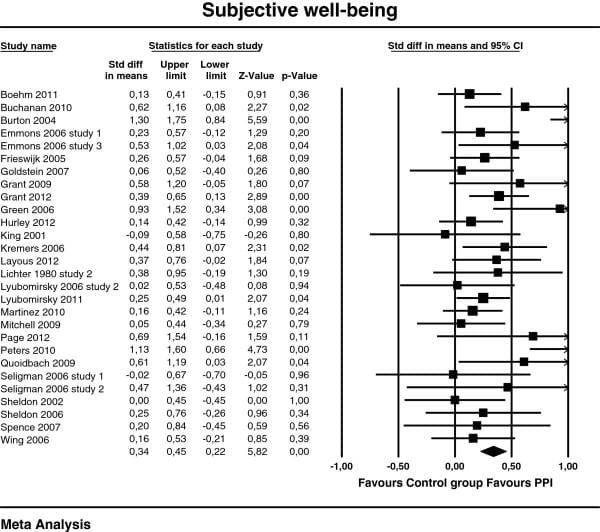
Annemieke Van Dam
(DipCAH, RSH.DipPH, WCA Cert. Wellness Coaching)
This is article three of a 3-part series which discusses the different types of therapies. We are discussing:
- Solution Focused Hypnotherapy
- Suggestion Hypnotherapy
- Time Line Therapy
- Traditional Hypnosis
- Human Givens Therapy
- Compassion-Focused Therapy
- Positive Psychology
Important to note is that some of the therapies mentioned still need more medical research and data.
Solution Focused Hypnotherapy
Milton Erickson is considered the founder of modern hypnosis. In the 1950s, he developed a form of therapy called Ericksonian hypnosis, which was based on the idea that solutions to problems could be found by focusing on the positive aspects of a situation.
Solution Focused Hypnotherapy focuses on self-development
Also, it is based on the principle that everyone has the resources they need to overcome their problems. The therapy aims to help the client find these resources and use them to solve their problems and achieve their goals.[1]
Solution Focused Hypnotherapists can also help individuals with:
- Confidence and self-esteem issues
- Stress, low mood, anxiety (including panic attacks)
- Physical issues such as Irritable Bowel Syndrome (IBS) and certain chronic pain conditions
- Specific phobias such as fear of spiders, water, flying, and public speaking
- Painful memories and traumatic experiences[2]
A feasibility study investigated the effectiveness of online Solution Focused Hypnotherapy (SFH) with employees from Northumbria Police Force who identified problems with their general wellbeing and/or functioning at work.
Participants (44 recruited/36 completed the study) also sought support for depression, sleep issues, loss of confidence, public speaking, and fertility issues. All of the participants who completed the treatment reported better scores in the mentioned areas.
Furthermore 78% of participants said they had no symptoms and had recovered completely at the conclusion of the program. See the table below for hypotheses and results.

Life wellness score increases of 84% showed the reduction in anxiety and depression symptoms, demonstrating an improvement in participant wellbeing and wellness.[3]
Suggestion Hypnotherapy
Suggestibility is fundamental in hypnosis. It involves an individual under hypnosis being in a state where they have an enhanced receptiveness and responsiveness to suggestions and stimuli presented by the hypnotherapist to help the individual achieve their goals.
Appropriate suggestions by the hypnotherapist can induce a remarkably wide range of psychological, sensory, and motor responses from persons who are deeply hypnotised.
Additionally, an individual can activate behavioural responses that he or she regards as a reasonable or desirable response to the situation that has been suggested by the hypnotherapist.[4]
Suggestion hypnosis is beneficial because it utilises the powerful effects of attention and suggestion to rapidly produce, modify and enhance a broad range of subjectively compelling experiences and behaviours to successfully treat a wide range of clinical conditions such as:
- Chronic and acute pain
- Irritable bowel syndrome (IBS)
- Post traumatic stress disorder
- Phobias
- Eating disorders[5]
Two studies have shown that hypnotherapy procedures have been helpful for those such as Vietnam veterans and people with a history of physical abuse in childhood with PTSD.
Hypnosis procedures have been especially helpful in these situations because this population is highly hypnotisable and it provides controlled access to memories that may otherwise be kept out of consciousness.
The new uses of hypnosis in PTSD involve coupling access to the dissociated memories with positive restructuring of the memories.[6]
Time Line Therapy
Time line therapy is a therapeutic process developed by Dr. Tad James in the 1980s, who was a Neuro Linguistic Programming (NLP) trainer.
Time line therapy focuses on releasing negative emotions attached to past events
These events can include
- anger
- fear
- sadness
- hurt
- guilt
Time line therapy also eliminates self-limiting beliefs that hinder a person from pursuing the life that they want. It can improve all aspects of an individual’s life because it aims to eliminate negative emotions to boost confidence, improve relationships and help them to achieve goals.
It helps with a wide range of physical, mental, and emotional conditions such as:
- Stress
- Post-traumatic stress disorder (PTSD)
- Anxiety
- Depression
- Addictions
- Phobias and fears
- Emotional eating
- Weight loss concerns
- Emotional disturbances
- Poor performance at work, sports, or academics
- Financial difficulties
- Sexual dysfunction[7]
A study of 25 rescue workers with generalised anxiety showed there was a significant statistical difference in pre and post analysis of participants, showing that generalised anxiety disorder can be relieved through time line therapy with hypnosis.[8]
Pre-testing | Post- testing | |||
Scales | M | SD | M | SD |
GAD 7 | 15.92 | .86 | 7.92 | .95 |
SR | 8.32 | .48 | 3.88 | .67 |
Effectiveness of Timeline Therapy Under Hypnosis for the Management of Anxiety Among Rescuers.
M=Mean, SD=Standard Deviation, GAD=Generalized Anxiety Disorder, SR=Subjective Rating.
The study also concluded that time line therapy provided immediate relief to patients in a shorter period of time than other therapies such as cognitive behavioural therapy.[8]
Traditional Hypnosis
John Watkins was a psychologist and is considered one of the earliest pioneers of hypnosis and was the founding member of the first professional hypnosis society in 1949.[9]
Since this time, knowledge of hypnosis and techniques have continued to evolve from the traditional methods to the discovery and application of more modern techniques, all of which are used in today’s hypnotherapy.
The suggestion structures and styles used in hypnotherapy are shown in the table below.
Suggestion Style | Example |
Direct style | “You can do/experience X.” |
Indirect style | “I knew someone who did/experienced X.” |
Authoritarian suggestion | “You will do X.” |
Permissive style | “You can allow yourself to do X.” |
Positive suggestion | “You can do X.” |
Negative suggestion | “You cannot do X.” |
Content suggestion | “You can experience this specific (e.g. sensation).” |
Process suggestion | ”You can have a specific experience.” |
Posthypnotic suggestion | “Later, when you are in a situation A, you can do X.” |
The techniques which are considered traditional are those which were utilised prior to the 1980s. During that time hypnotherapy was more authoritarian in nature utilising suggestion styles such as direct, authoritarian, and negative suggestions.
Hypnotherapists will usually use the range of suggestion styles referred to in the table but may utilise particular methods in preference to others depending on their personal preferences and what they believe works best for their clients.
RELATED — Introduction to Hypnotherapy: Mind-Body Intervention Technique
The more traditional, authoritarian techniques have their place in hypnotherapy and are particularly effective for those clients who are more responsive to directive and authoritarian commands.[10]
Studies claim that this form of hypnosis alone achieves a 30% success rate. It is noted that although clients may initially feel better, there is a higher chance of relapse in response to triggers.[11]
Human Givens Therapy
Human Givens is a relatively new approach to therapy developed in the 1990s and popularised by Joe Griffin, Ivan Tyrrell, and Denise Winn. The therapy was described in their 2003 book, Human Givens: The New Approach to Emotional Health and Clear Thinking.
The authors suggest that just as humans have physical needs for water, food, and shelter, they are also born with emotional needs that they must meet, including:
- Security
- Attention
- A sense of autonomy and control
- Feeling part of a larger community
- Intimacy
- Privacy
- Status within social groups
- Competence and achievement
- Meaning and purpose
RELATED — Introduction to Logotherapy: Our meaning and purpose in life
The Human Givens therapeutic approach thus helps people learn ways to think and act that will enable them to meet their core needs.
The therapy examines areas of a client’s life that are not working well with the goal of identifying missing emotional needs and considers ways in which they can be met.
The therapy includes the integration of education with solution driven thinking and utilised other therapeutic styles such as:
- Cognitive behavioural therapy
- Reflective listening
- Hypnotherapy
- Guided imagery
- Mindfulness[12]
RELATED — Introduction to Mindfulness: Enjoy the present moment and appreciate life
The British Psychological Society’s leading peer-reviewed journal, Psychology and Psychotherapy: Theory, Research and Practice published a 12-month evaluation of the Human Givens approach in primary care at a general medical practice.
They reported that more than three out of four patients were either symptom-free or reliably changed as a result of Human Givens therapy. On average, this was achieved with only 3.6 sessions.[13]
Compassion-Focused Therapy (CFT)
Compassion-Focused therapy was founded by Paul Gilbert in the 2000s. Gilbert was looking for a more specialised approach for individuals who were mostly dealing with shame and self-criticism, but that can also assist with mood disorders.
CFT aims to help us achieve compassion for self and others
To achieve this the therapist uses education and helps the client develop the key skills of
- Compassion
- Self-compassion
- Mindfulness
via a technique known as compassionate mind training.
Compassionate mind training is based on role-playing, visualisation, meditation, and activities intended to foster appreciation for daily life.
Clients also learn how to recognise self-criticism and develop techniques for defusing it when it arises.[13]
A systematic review and meta analysis reported by the Journal of Affective Disorders included a review of 15 studies undertaken between 2013-2022 which focused on randomised controlled trials and randomised pilot/feasibility studies of Compassion Focused Therapy (CFT).[14]

PHQ-9 (Patient Depression Questionnaire), GAD (The Generalised Anxiety Disorder Assessment).
Findings suggested that CFT was effective in improving compassion-based outcomes and clinical symptomatology from baseline to post-intervention and when compared to waitlist control.
A range of small to large effect sizes were reported for improvements in:
- self-compassion (0.19 to 0.90)
- self-criticism (0.15 to 0.72)
- self-reassurance (0.43 to 0.81)
- depression (0.24 to 0.25)
- eating disorders (0.18 to 0.79)
RELATED — Understanding Eating Disorders: History, Types and Statistics
The results showed promising clinical implications, suggesting that CFT increases compassion-based outcomes and reduces clinical symptomology in those with mental health difficulties.
However, future research is required into the long-term effects of CFT.
Positive Psychology
Martin Seligman and Mihaly Csikszentmihalyi founded Positive Psychology in 2000.
Positive psychology teaches how to harness the power of shifting one’s perspective to maximise the potential for happiness in many of our everyday behaviours.
It focuses on thinking about positive topics that can lead to shifts in wellbeing and quality of life, such as:
- Character strength
- Optimism
- Life satisfaction
- Happiness
- Wellbeing
- Gratitude
- Compassion
- Self-esteem and self-confidence
- Hope and elevation[16]
A meta analysis of studies on the effectiveness of positive psychology shows that it has small positive effects for psychological well-being and depression, with follow-up after 3-6 months showing that the effects are fairly sustainable.

The effect sizes of individual studies at post-test for subjective well-being and depression are shown in the table above.[17]
Related Questions
1. What is the difference between Cognitive Behavioural Therapy (CBT) and Compassion Focused Therapy (CFT)?
Cognitive Behavioral Therapy (CBT) is a short term behavioural treatment to help people solve problems.
Compassion Focused Therapy (CFT) is similar to the CBT approach to therapy but focuses on new understandings of areas that affect regulation systems, and the importance of affiliative and kind relationships in regulating mental states.[17]
It was originally developed for people who experience high levels of shame and self-criticism and who find experiences of support, kindness, and compassion difficult or even frightening.
For the first article in this series, see Types of therapy: which one is right for you? (Part 1).
Annemieke Van Dam is the founder of Livewell Hypnotherapy, and is a hypnotherapist and life and wellness coach operating onsite and online, New Zealand wide and internationally…
If you would like to learn more about Annemieke, see Expert: Annemieke Van Dam.
References
(1) Bell, S. (2022). What is Solution Focused Hypnotherapy? Retrieved from https://stevedellhypnotherapy.co.uk/solution-focused-hypnotherapy/
(2) Association of Solution Focused Hypnotherapy (Nd). Solution Focused Hypnotherapy. Retrieved from https://www.afsfh.com/solution-focused-hypnotherapy/
(3) Treby, E. Seymour, K. Johannes, G. (Nd). The Effectiveness of Solution Focused Hypnotherapy to Manage Mental Health in Northumbria Police. Retrieved from Northumbria-Police-Research-Full-Report.pdf (inspiredtochange.biz)
(4) Hammer, A. G. Orne, M. T. (2024). Hypnosis.
(5) Oakley, D. A. Halligan, P. W. (2013). Hypnotic Suggestion: opportunities for cognitive neuroscience.
(6) Jeffery, N. (2023). Scientific evidence for the effectiveness of hypnotherapy. Retrieved from https://www.hypnotherapy-directory.org.uk/memberarticles/scientific-evidence-for-the-effectiveness-of-hypnotherapy
(7) Natural Therapy Pages (Nd). What is Timeline Therapy?
(8) Ahmed, J. Fatima, A. Cheema, I. U. (2022). Effectiveness of Timeline Therapy under Hypnosis for the Management of Anxiety among Rescuers.
(9) Young, G. (2018). Traditional v Modern Hypnosis.
(10) Yapko,M., D. (2012). Trancework An Introduction to the Practice of Clinical Hypnosis. (4th ed). New York London Routledge.
(11) Mikail, H., G. Mamman, M. (2020). Hypnosis and Hypnotherapy: The Role of Traditional Versus Alternative Approach. Retrieved from https://www.researchgate.net/publication/340055288_Hypnosis_and_Hypnotherapy_The_Role_of_Traditional_Versus_Alternative_Approach
(12) Psychology Today. (Nd). Human Givens Therapy. Retrieved from https://www.psychologytoday.com/us/therapy-types/human-givens-therapy
(13) Andrews, W., Twigg, E., Minami, T. and Johnson, G. (2011). Piloting a practice research network: A 12-month evaluation of the Human Givens approach in primary care at a general medical practice.
(14) Psychology Today. (Nd). Compassion-Focused Therapy.
(15) Millard, L. A. Wan, M. W. Smith, D. M. Wittkowski, A. (2023). The effectiveness of compassion focused therapy with clinical populations: Asystematic review and meta analysis. Retrieved from https://www.sciencedirect.com/science/article/pii/S0165032723000228
(16) Ackerman, C., E. (2018). What is Positive Psychology & Why Is It Important? Retrieved from https://positivepsychology.com/what-is-positive-psychology-definition/
(17) Boiler, L. Haverman, M. Westerhof, G. Riper, H. Smit, F. Bohlmeijer, E. (2013). Positive psychology interventions: a meta analysis of randomised controlled studies. Retrieved from https://www.ncbi.nlm.nih.gov/pmc/articles/PMC3599475/






